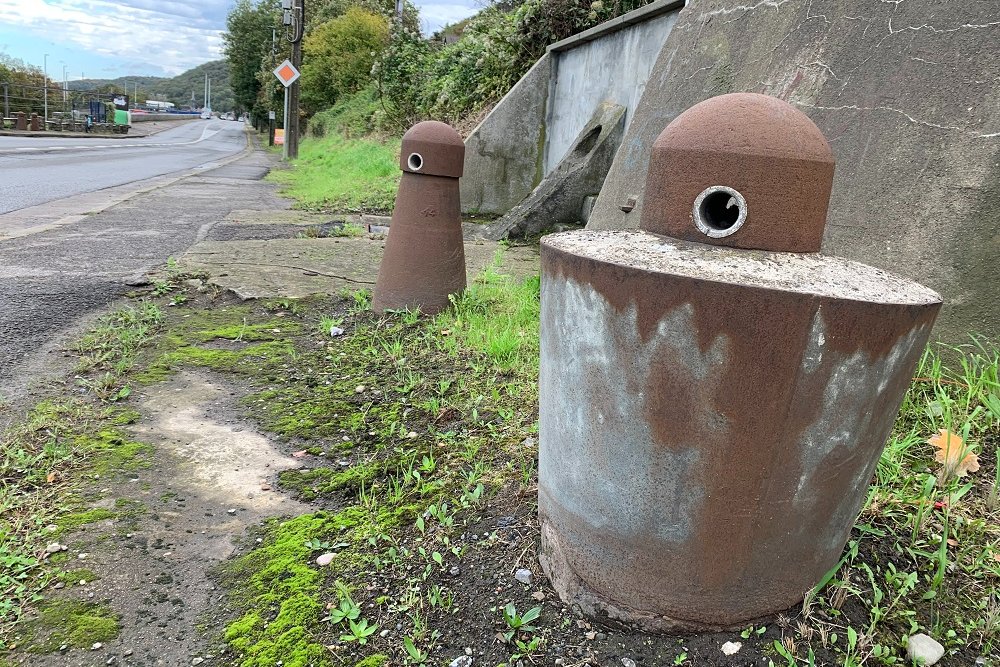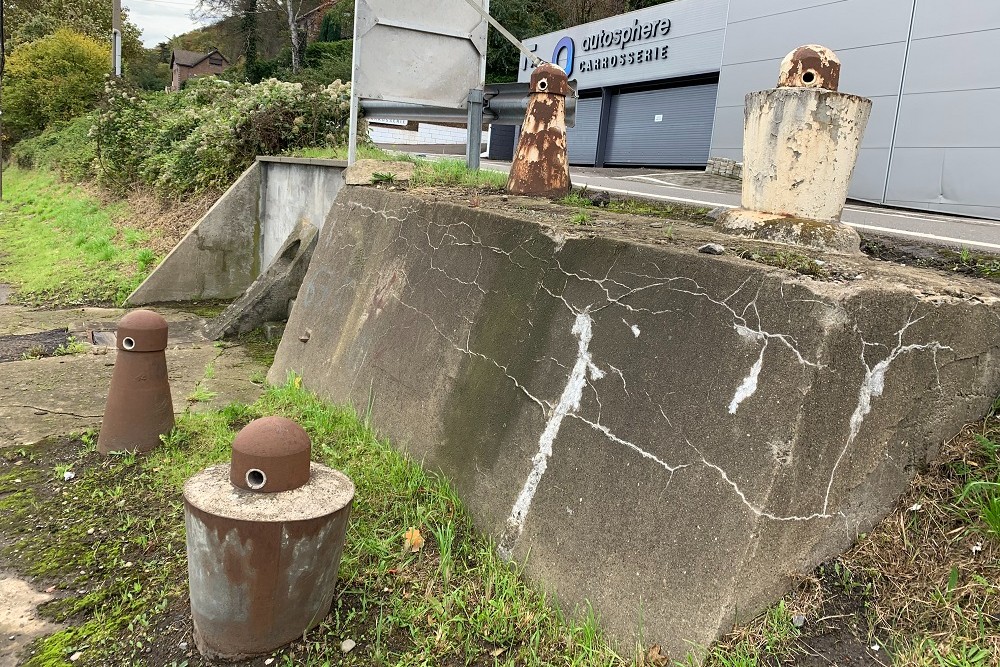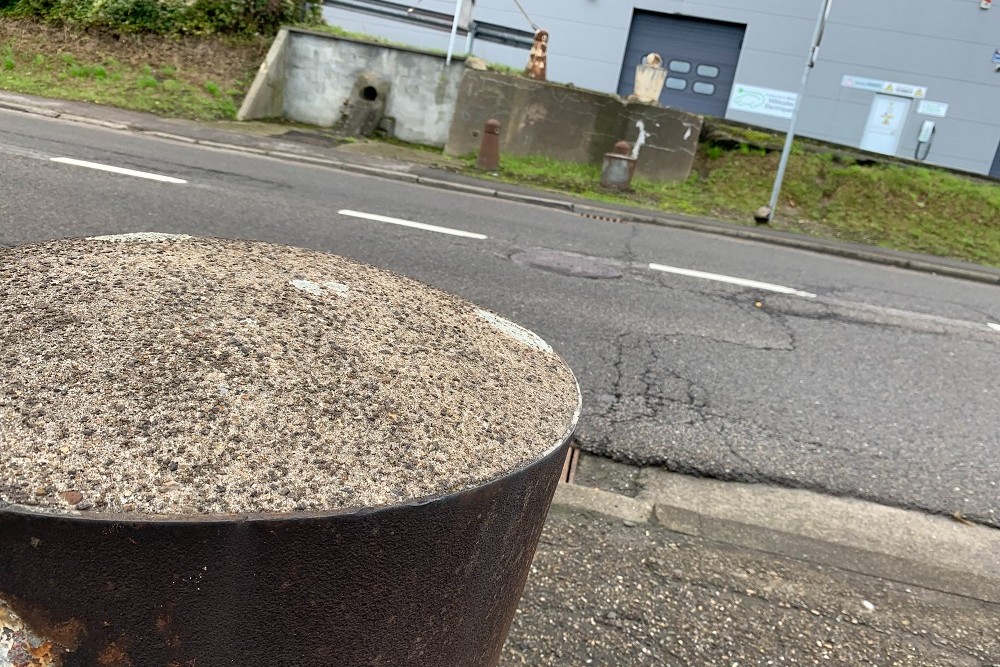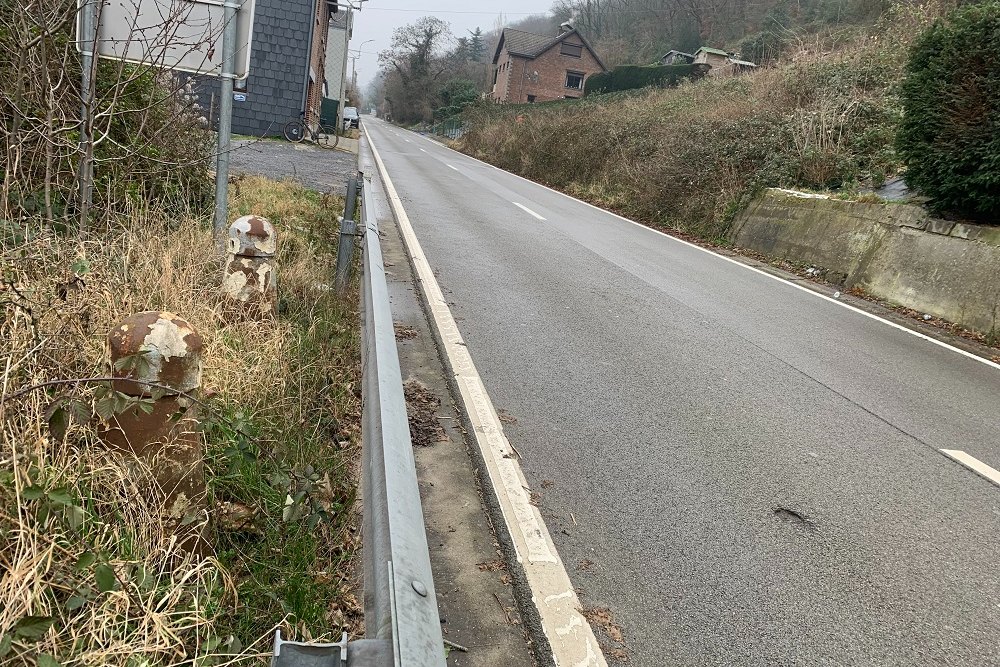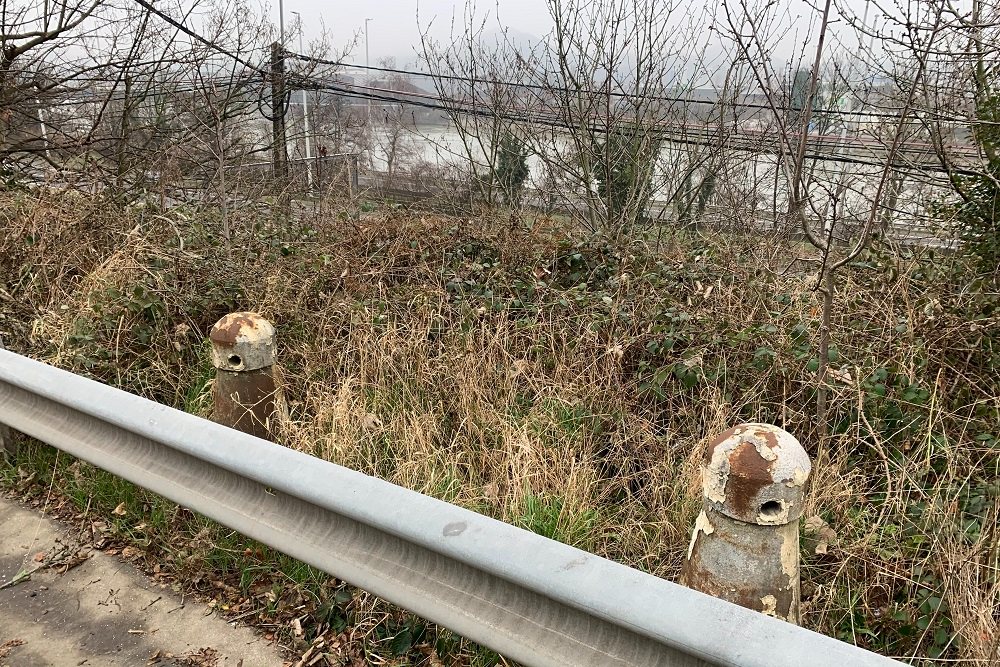Bornes Cointet anti-char at Jupille-sur-Meuse
On the road from the village of Visé and Jupille-sur-Meuse (city of Liège) there are several so called bornes anti-char. Anti-tank obstacles to create a roadblock.
One would easily pass by not knowing therse obstacales are in fact part of history of Worldwar 2.
Most types used are; borne Cointet, borne à Câble and a variation between these two, the borne à câble modifiée.
Typical for the borne à câble and borne à câble modifiée is that they have holes in which steel cables could be hung to avoid traffic coming through. This hole is absent at the type Cointet. Between two bornes Cointet there would be a steel calbe which made it possible to pull several fences on the road so nothing could pass.
Realising this road was an important connection alongside the river Meuse and the city of Liège and 'suburb' the village of Visé, the road has a very well defenseline. There are no less than 11 bornes (obstacles). Keep in mind that in the early 30's there was no motorway A25-E213. When creating the lines of defence for the city of Liège (la Position Fortifiée de Liège) there was only this road and the railway next to the road.
Because the strategic value of the road, railway and river Meuse the PFL had planned two bunkers alongside the road. Bunker PP5A (permanent post 5A) and IR 5 (counter-irruption 5A). These bunkers were part of the 3rd line of defecens for the city of Liège, PFL 3. A permaent post, would be manned around the clock unlike other bunkers. Both bunkers were demolished after the war.
The obstacles are numbered, but have no codes like the specific obstales who are part of a bunkersite, see articles roadblock near bunker Ag1 and roadblock near fort Chaudfontaine .
The concrete cavity (photograph 3, opposite of the road) was in use for storing the fences when not in use for blocking the road.
Do you have more information about this location? Inform us!
Source
- Text: Ed Lewandowski
- Photos: Ed Lewandowski
- La Position Fortifiée de Liège, Tome 3, Les abris de la PFL 2. E. Coenen & F. Vernier.
- La Position Fortifiée de Liège, Tome 6, Les abris de la PFL 3. E. Coenen & F. Vernier.
Nearby
Museum
Point of interest
- Bunker MeMo 1 and 1 bis - Ile Monsin, Liège
- Mermorial Jackie Jansen, Robermont - Grivegnée (Luik)
- Memorial Capain Pire Fort Pontisse - Oupeye
Monument
- Memorial Armée Secret, Ile Monsin - Wandre (Liège)
- War Memorial Wandre - Wandre (Liège)
- War Memorial Jupille-sur-Meuse - Liège
Cemetery
- Belgian War Grave Rabosée - Rabosée (Wandre)
- Belgian War Graves Herstal-Foxhalle - Herstal
- Belgian Wargraves Wandre - Wandre
Remembrance Stone
- Stumbling Stones Rue Devant les Ecoliers 3 - Liège
- Stumbling Stones Rue des Champs 24 - Liège
- Stumbling Stone Rue Grétry 229 - Liège
